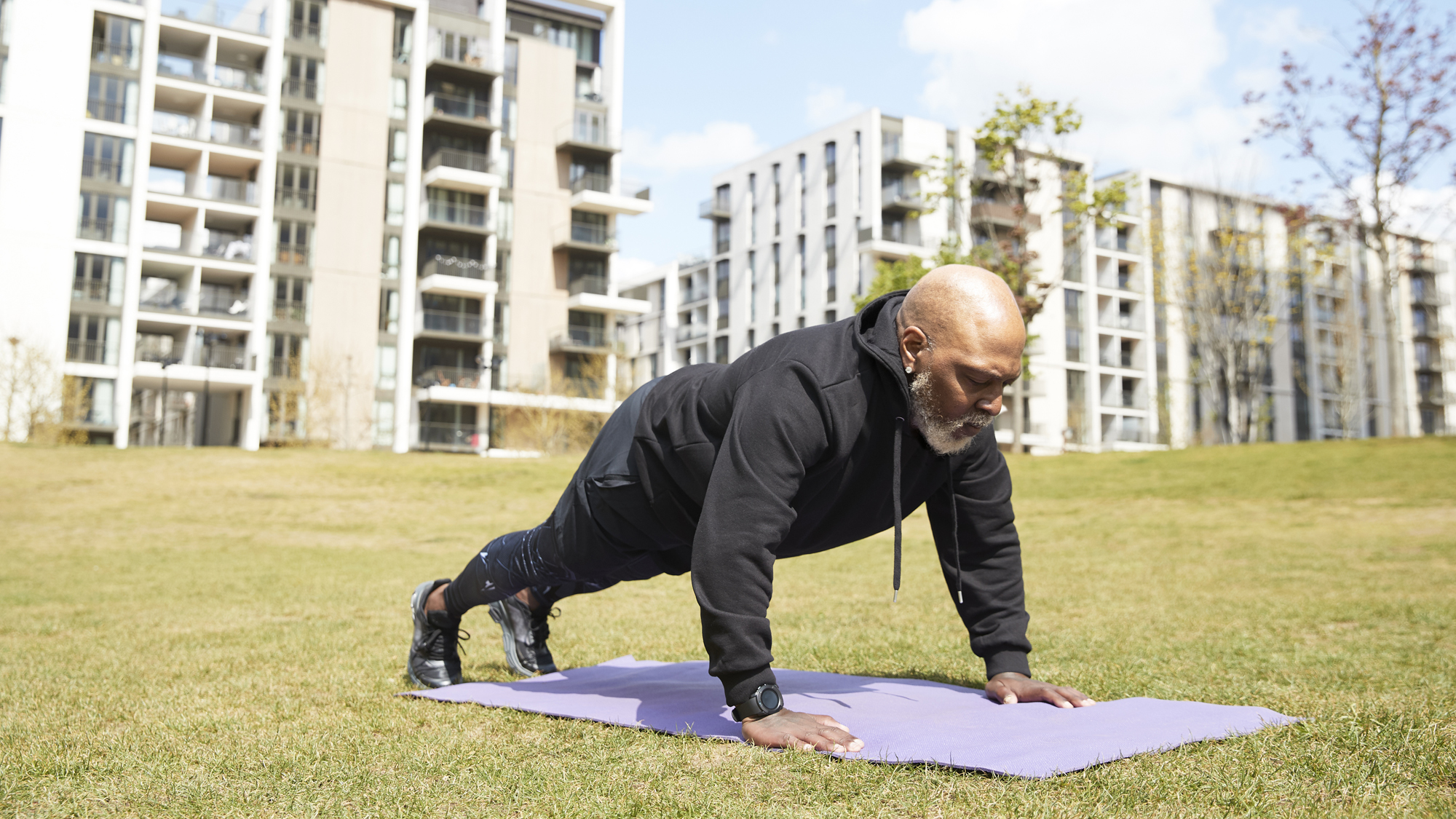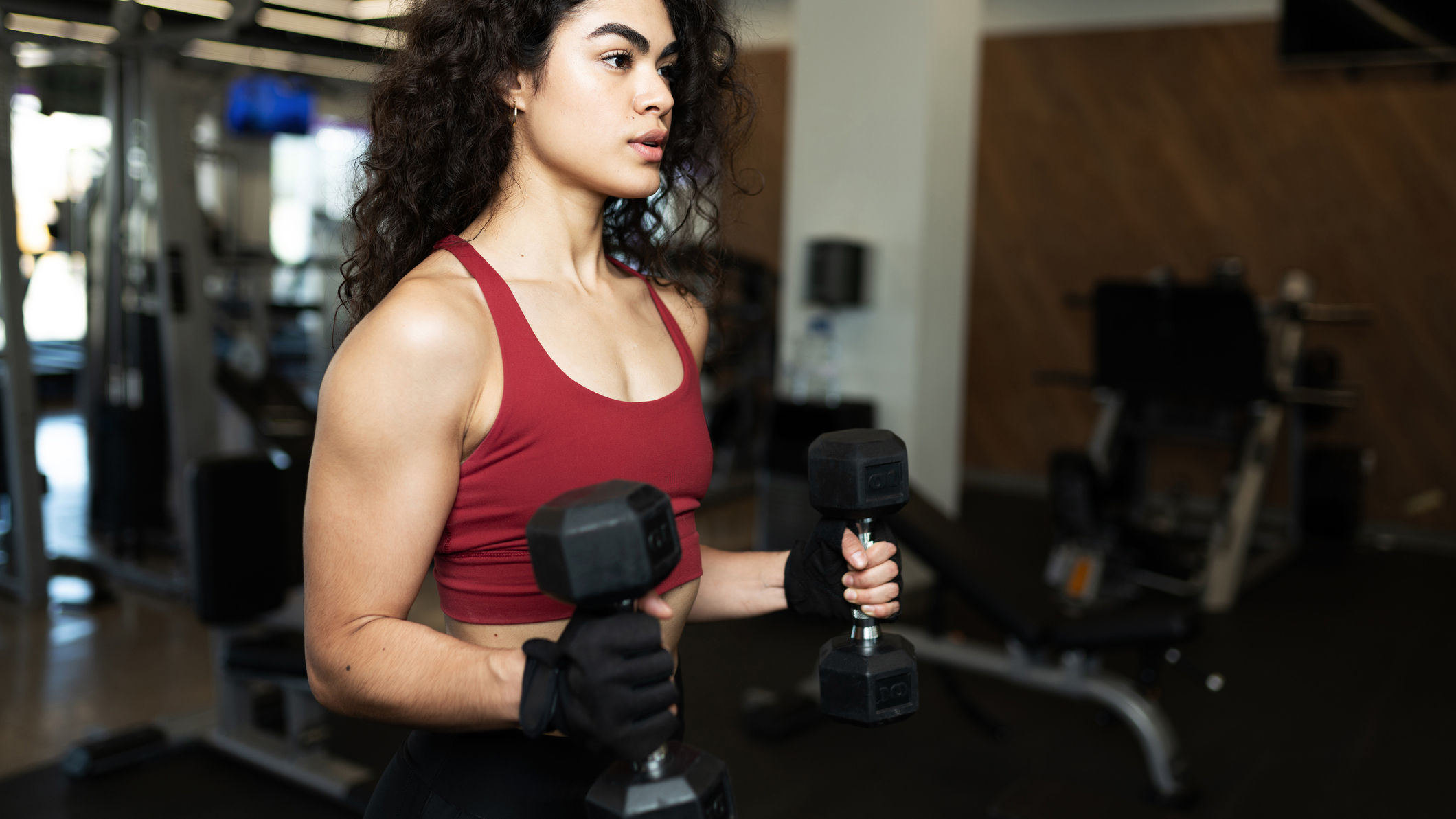This 12-minute muscle workout is perfect to reduce blood pressure
New research finds that 12 minutes of IRT exercise can help you safely manage your blood pressure.


If you suffer from high blood pressure, you can manage it by changing your diet, losing weight, and lifestyle changes like reducing your alcohol intake or quitting smoking. You could also exercise, but, for many years, healthcare providers advised against Isometric Resistance Training (IRT).
However, new research shows that this static exercise is safe and as effective as some medications. IRT is a type of strength training where your muscles are in tension, but they don't change length. This includes exercises like holding a plank, bridge, squat, or many of the best workouts for abs.
As your body is in a single position for the duration, there was a concern that staying still or holding your breath through exertion could increase your blood pressure – a problem for anyone already living with high blood pressure. However, new research found the opposite is actually true: far from raising your blood pressure, isometric training is a powerful tool for reducing it.
This new study from the University of New South Wales assessed previously published research on the links between blood pressure and IRT to see whether it was a safe and effective way to reduce blood pressure. The good news is that the authors found that IRT is safe for those with high blood pressure and that it can be almost as effective as BP-lowering medication.

In fact, you can see the benefits from just 12 minutes of IRT three times per week. If you struggle to fit in a more extended workout, this short session takes up little time but could have a life-changing effect. Although there are many different forms of IRT, some of the studies included in this research only required participants to squeeze a specialized handgrip.
This makes IRT exercises the ideal alternative for anyone who is less mobile or struggles with higher intensity workouts, as you could find activities which place no stress on your joints and still feel some of the benefits. The study's authors note that you might get a similar effect by clenching your fist and squeezing it for a length of time – but if you want to get a proper workout in, you can check out our guide on how to do a plank here.
Still, the papers included in this review used small sample sizes and a range of methods, so there's more research to be done. For now, there's evidence to show that IRT is safe, although if you do have high blood pressure, it's probably worth checking with your healthcare team before diving into IRT exercises.
Start your week with achievable workout ideas, health tips and wellbeing advice in your inbox.
12-minute IRT exercise routine
Fortunately, you can get many of the benefits of IRT with just a 12-minute workout. Personal trainer Chris Ruxton, an ambassador for Deep Heat and Deep Freeze, has put together a quick routine you can follow to get the most from these static exercises.
Perform each exercise for 45 seconds with 15 seconds of rest in between. If you want to build up to that, start at 30 seconds of exercise with 30 seconds of rest and gradually increase the time over a few weeks. All you need is a couple of handheld weights, such as our best adjustable dumbbells.

- Wall sit – with your back against a wall, slide down into a sitting position with your legs at 90 degrees. Hold out your hands in front of your chest and maintain this position, keeping your core tight.
- Plank – lying face down, take up a press up position on your toes with your arms straight, then brace your core and hold. For an easier version, drop your knees to the floor, but keep your arms straight and your core tight. if you're new to this exercise, check out our guide on how to do a plank.
- Gun hold – taking an object in each hand (tins of soup, kettlebells, or dumbbells) hold them at 90 degrees to your body with your elbows tucked into your sides, as in the image above. Keep your chest up and your core tight.
- Wall sit – repeat the wall sit. Try to sit for longer this time if you didn’t manage 45 seconds earlier.
- Side plank (left) – lie on your left side with legs straight and feet stacked on top of each other. Place your left hand on the floor under your left shoulder and raise your hips and knees off the floor. Keep your core tight and avoid collapsing your hips. For an easier version, drop your left knee to the floor but keep your right leg straight.
- Overhead hold (left) – standing up straight, take an object in your left hand (tin of soup, a handbag, or a small dumbbell) and reach up above your head with your straight elbow close to your left ear. Then hold, remembering to breathe throughout.
- Overhead hold (right) – standing straight, take an object in your right hand as before and reach up above your head with your straight elbow close to your right ear.
- Side plank (right) – lie on your right side with legs straight and feet stacked on top of each other. Place your right hand on the floor under your right shoulder and raise your hips and knees off the floor. Keep your core tight and avoid collapsing your hips. For an easier version, drop your right knee to the floor but keep your left leg straight.
- Gun hold – as before, take your two objects and hold them at 90 degrees to your body with your elbows tucked into your sides. Try to hold for longer or use slightly heavier objects.
- Isometric push up – starting face down on the floor, go into a push up position with your knees remaining on the floor. Now bend your elbows until your chest is just hovering off the floor and hold this position for 30-45 seconds. Look just ahead of your hands at the floor. Remember to breathe throughout. Take a look through our guide on how to do a push up properly to get your form right and avoid injury.
- Lunge hold (right) – standing up straight, lunge forwards with your right leg so you feel a stretch in your left hip flexor and quad. Place your hands on your hips, look ahead and keep your chest up. Now hold, remembering to breathe throughout the 30-45 seconds.
- Lunge hold (left) – standing up straight, lunge forwards with your left leg so you feel a stretch in your right hip flexor and quad. Place your hands on your hips, look ahead and keep your chest up. Now hold, remembering to breathe throughout the 30-45 seconds.
To ease yourself into this type of training, consider taking time out for a 30-minute yoga flow workout for beginners. You might even want to download one of the best fitness apps to monitor your progress.

James is a London-based journalist and Fitness Editor at Fit&Well. He has over five years experience in fitness tech, including time spent as the Buyer’s Guide Editor and Staff Writer at technology publication MakeUseOf. In 2014 he was diagnosed with a chronic health condition, which spurred his interest in health, fitness, and lifestyle management.
In the years since, he has become a devoted meditator, experimented with workout styles and exercises, and used various gadgets to monitor his health. In recent times, James has been absorbed by the intersection between mental health, fitness, sustainability, and environmentalism. When not concerning himself with health and technology, James can be found excitedly checking out each week’s New Music Friday releases.